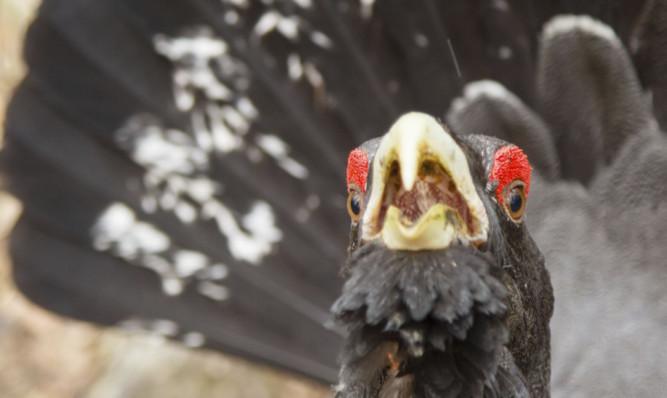A major new conservation effort will be made in the Cairngorms National Park to protect one of Scotland’s most iconic but most endangered birds.
The nation’s capercaillie population has plummeted over the past four decades, decreasing from a high of 20,000 birds in 1970 to a recent figure of just 1,000.
In the face of such catastrophic decline, the national park is now the sole remaining Scottish stronghold for the capercaillie, providing a home to at least 80% of the national population.
Efforts to reverse the trend and boost numbers once again are now at the forefront of a major initiative being led by the Capercaillie Framework.
The project has been studying birdlife in the park and its findings are this week expected to be endorsed by the Cairngorms National Park Authority (CNPA) Board.
It is likely to back an extensive programme of woodland expansion and habitat improvement to provide a more stable, sustainable and welcoming environment for the important birds.
“Expanding the capercaillie population in Strathspey is critical to the species’ future in Scotland,” said the CNPA’s director of conservation and visitor experience, Hamish Trench.
“In the long-term, habitat expansion and improvement is key but we also need to manage other pressures.”
Disruption of the birds and their habitats has been identified as one of the key challenges faced by the species.
A major education drive will see the project partners working to raise awareness of wildlife issues with the public, land managers and those who provide recreation and visitor experiences in areas of the national park.
“Public awareness will be a vital part of conservation efforts as human disturbance is a known factor influencing the capercaillie population,” said the framework’s project manager Justin Prigmore. “We will need the help of communities that are near to capercaillie habitat to support the conservation work.
“This might involve using different routes for dog walking or cycling during the nesting season. Local people have a huge part to play in saving this charismatic emblem of our Caledonian forest.”
